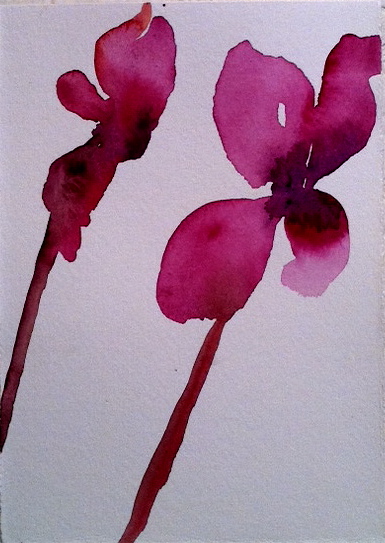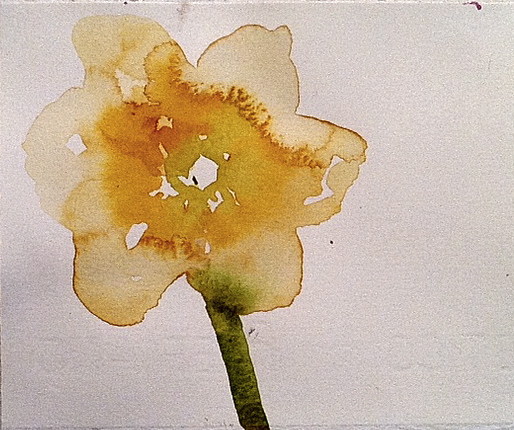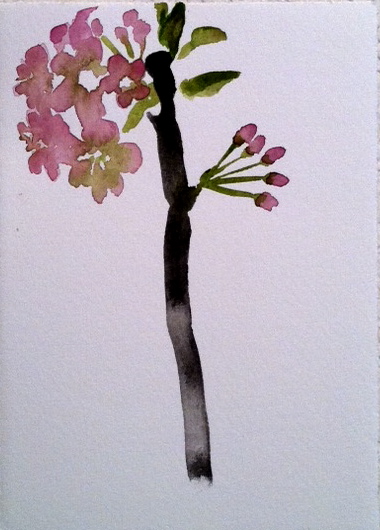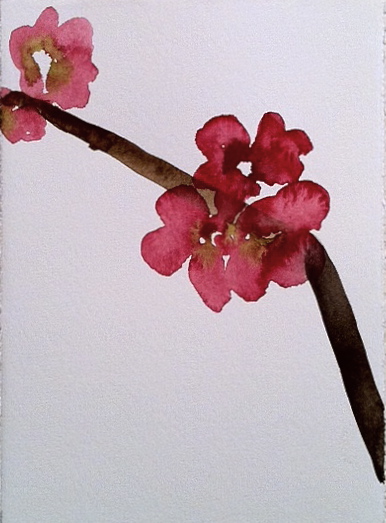I've been drawing circles since I was four, but my fascination with them as an art form dates back to to the 80's in front of an ashram in Oakland, CA, where, just outside the door, I saw a most astonishing drawing done in a rich array of vibrant colors all contained in a circle.
 |
| Ritual rangoli done in powdered pigments |
These circles, called rangolis, were done for religious or healing ceremonies. As an artist, I ached to be able to do something like this and after some investigation, came upon the mandala (the Sanskrit word for circle), an art form with a long history across many cultures. Like the rangoli, it is art created created for ritual purposes in a circular form and these days, also employed in art therapy.
 |
| New Years Mandala, ©2008, Hannah Hunter, Collage |
So, while I've been painting, collaging, and inscribing these geometric discs for years, nothing could have prepared me for the excitement about the circle that recently burst upon the art scene in the form of Damian Hirst's spots.
I started poking around and pretty soon I discovered that I could make a distinction between a circle and a spot. It's strictly my interpretation, but the way I see it is that the spot is just that: a rounded mark or splotch made by foreign matter. It seems to have arrived in a rather casual manner.
 |
| Spots tossed on a watercolor in the studio, photo by Amelia McSweeny |
The circle on the other hand is a closed line, something inscribed in which all the points on the line lie at the same distance from the center. It seems intentional, elegant, something that shows up in nature, but also something that 3 and 4-year olds begin drawing as they enter into the world of representation. The circle is one of the early building blocks.
 |
| Rose Colored Egg, ©1998, Hannah Hunter, Colored pencil |
I looked up on my studio wall, where all three current pieces are iterations of the circle, so I tried to dig a bit deeper to see what was so fascinating-- and, what keeps me returning to them as a form decade after decade.
 |
| Rice Bowl, ©2012, Hannah Hunter, Collage |
I'm reminded of something that another blogger, Gwyneth Leech, said in a recent post, "Spots Before My Eyes...:""...there is the infinite variety of things, then there is an infinite variation of one thing." A circle suggests eternity (think of a ring), something bigger than myself, time layered upon itself, the pleasure in creating a multitude of variations on a theme.
 |
| Zodiac Season, ©2010, Hannah Hunter, Collage |
The idea that each circle can both be the same yet different; it's own infinite, elegant universe is powerful. A 3-year taps into these infinite possibilities without fear or the preconceived notions of adults. When I began this post I thought that I'd be arguing for the integrity of the circle, but now that I've experienced spots and dots á la Hirst (and, for a great post on spots, see Joanne Mattera's "Connecting the Dots), I'm looking to get rid of some of my trepidation and preconceived notions, and hopefully, adopt some of the spot philosophy too.
I know that many of you have had fun in the studio with circles, spots and dots--if you have any stories or images you'd like to share I'd love to hear from you.
 This week I've been thinking about the patients I see at work and the health changes I'm encountering in my own life as I go through the proverbial aging process. I've made a conscious decision to not be one of those people who ruminates and makes a running commentary on their health.
This week I've been thinking about the patients I see at work and the health changes I'm encountering in my own life as I go through the proverbial aging process. I've made a conscious decision to not be one of those people who ruminates and makes a running commentary on their health.












